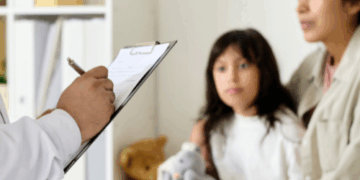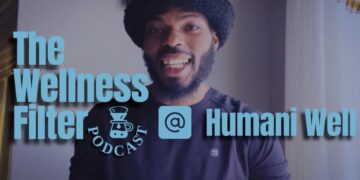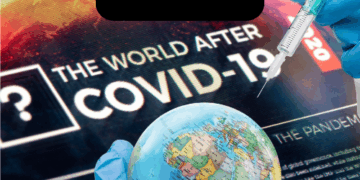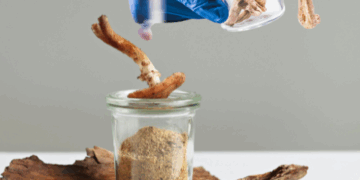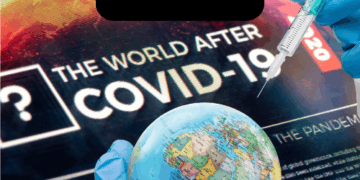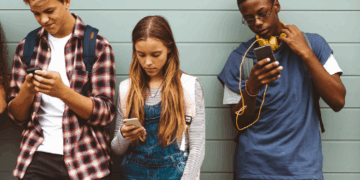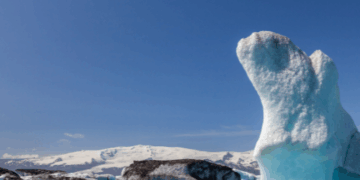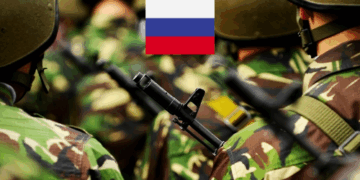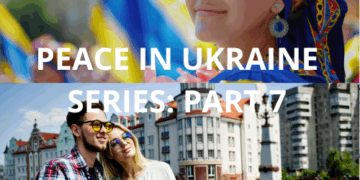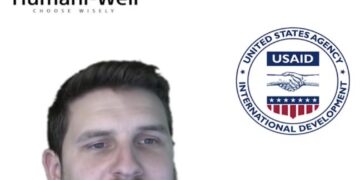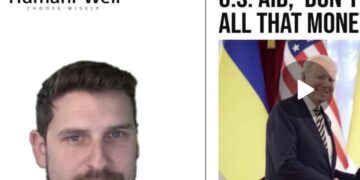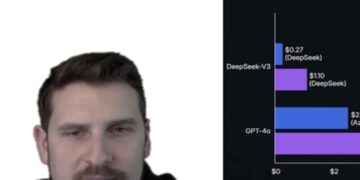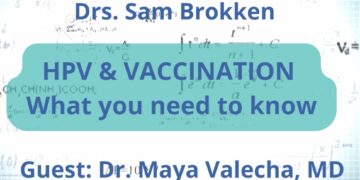- General Information
- Health
- Society
- Media
- Become a MemberPREMIUM
- Events
- Contact Us
- Shop
- Categories
- Access to Health
- Ageing & Longevity
- Asset-Based Community Development
- Community & Health
- Ecology & Environment
- Economic & Political Root Causes
- Economic Stability
- Education
- Environmental Contaminants
- Ethnicity & Gender
- Health Condition of the Body
- Holistic Approach
- Law & Human Rights
- Men’s Health
- Natural Medicine
- Nutrition & Food
- On A Philosophical & Ethical Note
- Political Acceptance & Opposition
- Race
- Social Determinants of Health
- Traditional Medicine & Adjuvant Therapies
- Transhumanism
- Wellness
- Women’s Health
VIRUSES EVERYWHERE! OR JUST ANOTHER CASE OF ‘MISINFORMATION MANIA’ GONE VIRAL?
The media is the biggest culprit in jeopardising public health
INTRODUCTION
Pathogens have been on this planet for as long as people have. For millions of years, no one was aware of these microorganisms, and we occasionally became unwell without a proper reason. Our research capabilities have advanced dramatically over the previous 300 years, allowing us to recognise the environment around us at the microscopical level.
Until 2019, virus outbreaks were as widespread as they are today, but few people paid attention to them. The only ones talking about new ‘outbreaks’ were academic researchers publishing papers describing one or more virus strains that had emerged in some countries worldwide. Few journalists attended WHO press briefings, and media coverage was always limited.
No one cared what the ancient and outdated WHO had to say. Being ill was a normal part of life; you got sick, recovered, and moved on. Any infection can result in premature mortality among the elderly or those with underlying conditions. Until the coronavirus pandemic, we thought of this as a normal part of life.
Today, news outlets, social media, and governments are all over the place warning about the possible hazards of Bird Flu (H5N1), Human Metapneumovirus, RSV, Norovirus, COVID-19, and a few influenza subtypes. The population becomes swamped with anxiety. Remember how, until 6 years ago, outbreaks were rarely discussed, even though the majority of these viruses are constantly circulating?
SOME HISTORY
We seem to ignore that modern influenza-like strains, known as ‘flu’ today, have been circulating for more than a century. Official data estimated that up to 650.000 people die each year from influenza-like infections. These statistics are extremely conservative, given they are based solely on ‘positive’ tests collected in some reference centers per country. Prior to 2019, almost no general practitioner requested a full-blown analysis to determine which virus infected the patient. In elderly care homes, people passed away after ‘a short illness’ and were considered ‘natural deaths’. In reality, many caught a ‘flu’ when weakened and consequently passed away.
It is difficult to determine the actual number of persons who have died from infectious diseases throughout the last century. When the Spanish Flu (Influenza A, H1N1) first hit in 1918, the world’s population was estimated to be 1.8 billion. After two years, an estimated 21 million (conservative estimate) to 100 million people died of Spanish Flu (Barry 2004).
Throughout the previous century, the world’s population has increased dramatically, reaching 8.2 billion people today. Officially, COVID-19 killed over 7 million people out of an 8.2 billion-person population over four years and counting. The question remains: how many people died as a direct result of COVID-19 or from their comorbidities when infected by COVID-19? Just put these figures into perspective.
Humanity endured three major influenza pandemics (1918-1920, 1957-1959, and 1968-1969), with the last two receiving little to no public attention. The 1957-1959 (H2N2) pandemic caused 1.1 million excess deaths. In 1968, H3N2 caused between 500,000 and 2 million deaths. Life simply resumed, and it was regarded as nothing out of the ordinary (Barry 2004, Doshi 2008). Those with normally functioning immune systems just caught a cold. The most vulnerable groups are to be found consistently in the same age stratifications: extremely young children and the elderly with underlying illnesses (Honigsbaum 2020).
So, how many people have died from avian transmissible viruses over the previous century? It remains difficult to say. The published and underestimated average of 650.000 Influenza-Like-Illness-mortality (ILIs) per year seems hard to believe as viral testing never happened in large groups before. Even a mortality 1 million in ILIs may well be an underestimation. Based on the latter, we most probably lost about 130 million people with ILIs in the last century. It’s always been part of life.
HOW (SOCIAL) MEDIA CONTRIBUTED TO THE SEVERITY OF DISEASE
The COVID-19 pandemic officially began at the end of December 2019, when China warned the WHO of a potential viral outbreak. With the Christmas season and New Year’s Eve approaching, President Trump was playing golf at Mar-a-Lago, while other global leaders were shopping and relaxing. Traditionally, this is a time of year when the legacy media has little interesting news to report. Always a calm peaceful press period until around two weeks into the new year.
Suddenly, journalists hunting for news gathered ‘en masse’ in the WHO press room to report on a recently found viral outbreak. The entire world was notified by mid-January, and it made international headlines through mainstream media. Furthermore, fuelled by social media, practically every citizen on earth could keep up with what was going on in real time. This sparked a vast avalanche of (conflicting) information, trapping the global citizen in the center of the media’s sensation. Governments were in a state of panic and wanted to control the narrative. Which proved difficult in this technological age.
Social media platforms as META (FB and IG), LinkedIn, and Twitter (now X), all played a major role in suppressing debate and deleting posts on contrasting scientific evidence that pointed out safety concerns and potential side-effects. This was aggravated by deleting and canceling social media profiles of dissenting scientific academic voices. As no counter-arguments were allowed, most laymen only got acquainted with one-sided narratives and often, unsubstantiated ‘truths’. Up until today, this censorship is still ongoing and even put in legislative frameworks in some regions.
The role of the (social) media, and the subsequent chokehold placed on our civilisation by governments, health agencies, and biased reporting during the pandemic, should be questioned as one of the major disaster stressors leading to fear, anxiety, depression, and other mental issues within the global population (Zhao and Zhou 2020, First et al. 2021).
Paradoxically, human curiosity drove many people to keep track of the latest fearmongering news, causing additional mental issues through a process known as ‘doomscrolling’ (Yao 2020, Peck et al. 2022).
Chronic anxiety caused by fearmongering results in reduced immune responses, as it also occurred during the COVID-19 pandemic (Liang et al. 2020). As a result, we may wonder how many people perished as a result of an insufficient immunological response to SARS-COV infection, as their mediating neurobiological processes were entirely disrupted by persistent stressors (Mattos Dos Santos 2020, Peters et al. 2021). This fact is rarely discussed, yet it seems more than likely that this ‘nocebo-effect’ caused a substantial number of preventable deaths, as those persons succumbed to a dysfunctional immune system caused by constant fear.
LOCKDOWNS ADDED TO THIS
Additionally, lockdowns reduce the effectiveness of immunological function. All living organisms must be constantly challenged by pathogens; if not, adequate immune responses will deteriorate quickly. This was one of the main arguments presented in my open letter proposing ‘focused protection’ (‘Reversed Lockdown’), co-signed by 1.500 Professors, MDs, and Health Professionals) in August 2020.
Limited contact with microbes causes immunity debt in children, making them susceptible to allergies and more (severe) infections. It was suggested in the letter that lockdowns and over-sanitization would have an impact on our natural immune systems, potentially leading to more serious illnesses and avoidable deaths. Research now clearly shows that this was the case. In children, it is stated that lockdowns led to immune debt, and a lack of contact with pathogens would lead to a compromised immune system. (Finlay et al. 2021; Ghanemi et al. 2021; Joffe 2021; Sousa et al. 2023; Otten et al. 2024, Nygaard et al. 2024).
THE HYPE OF THE MOMENT: YOU ARE ONCE AGAIN IN DANGER!
Let’s take a quick glance at the current most hyped pathogens.
Bird Flu (H5N1): As the name says, this avian influenza infects birds, cows, and other animals. The virus does not spread easily to humans. Contracting it can occur by direct contact, contact with animal secretions, or consumption of raw cow milk. The mortality rate in humans is 52%, a calculation based upon 876 cases over roughly 25 years (questionable). The virus must change to infect humans more easily. Research has already demonstrated that when the most likely mutations occur in Bird Flu, the virulence and severity will most probably decrease. In mid-2024, 5 human cases were found in the United States; currently, 61 cases have been documented, with one individual being seriously ill. Currently, it does not appear that we are facing a major issue.
HMPV: The virus was initially described in 2003 and causes symptoms similar to those of the common flu. It is estimated that 12% of children with respiratory diseases contract HMPV, which is difficult to distinguish from RSV. As with most ILI diseases, vulnerable groups may experience more severe symptoms. However, the fatality rate is low, similar to that of RSV (Feng et al. 2024; Miyakawa et al. 2024).
This raises the question, how long has HMPV been circulating without anyone detecting it. How many doctors are familiar with this virus? Is there even a reason to mention this in the media?
RSV is one of the most prevalent viral respiratory tract illnesses. Most children have already been infected by the age of two, with a 0.3% fatality rate (Mazur et al. 2024). In older children and adults, this causes moderate flu-like symptoms. People who are immunocompromised or have serious comorbidities may experience worse outcomes (Doty et al. 2024). But again, has been around for ages. Nothing has changed.
Norovirus is a viral disease transmitted through water or food, causing gastroenteritis. A significant decrease is noticed during the previous two decades as a result of improved hygiene and sanitation practices, particularly in low-income countries. Although the virus is very infectious, the current age-standardised fatality rate is 1.62 per 100,000. The most vulnerable populations, as always, are children under the age of five and those over the age of 85 (Zhu et al. 2025). Also, this pathogen has been around for decades.
COVID-19 has attained the same level of infectiousness as other viral influenza-like illnesses. As with all new viruses, they have a tendency to diminish in virulence over time. But almost every new strain gets major press attention. The mortality is now comparable to any common cold.
Most general practitioners, depending on the availability of local health resources, will not even run testing to determine which virus is causing the problem. In many nations, the cost of standard-practice testing is too costly.
WHAT DO WE WANT AS A SOCIETY? FEAR?
Nowadays, everything needs to be ‘Zero’: zero emissions, zero carbon footprint, zero fatalities.
We can all choose to live in dread, avoid illnesses, isolate ourselves in our homes, and live like a hermit. Wearing face masks all the time, sleeping in a clean air tank, socially isolating ourselves, and sanitising everything we touch.
The end outcome will be a lack of immune challenge, which will weaken all of our innate and adaptive immune responses, leaving us vulnerable to death from the most prevalent pathogens.
Can we still accept death as part of life? Can we still accept being part of a global ecosystem that built our human bodies to withstand germs, germs that live in cohabitation with us? Or will we continue to deny that we are humans, part of nature, and vulnerable per definition?
HOW CAN WE PREVENT A MAJOR NEW PANDEMIC?
Substantiated Public Health measures are at the core of any future global outbreak. This requires a thorough examination of the pathogen implicated, its infectiousness, the identification of vulnerable people, and guidance tailored to these specific groups.
National governments are generally ill-informed about public health issues. Instead of mindlessly following biased health institutions, public health organisations, and academia enmeshed in conflicts of interest, the most reliable solution would be to hire independent specialists. Those should be selected amongst specialists with no ties to pharmaceutical companies or bearing sponsored/corporately financed academic positions. Hence, ensuring impartial analysis and underpinned approaches agreed upon within national working groups.
Throughout the pandemic, the WHO has proven to be an untrustworthy and biased partner. They claimed ‘the’ science, despite the fact that hundreds of thousands of (silenced) medical and health professionals disagreed with their ‘recommended’ solutions, and scientific articles warned of possible negative consequences. The role of the WHO should be redefined and solely funded by governments.
As an organisation, they should focus entirely on collecting global disease data rather than disseminating biased or unsubstantiated ‘solutions’. Local authorities might then utilise the collected data to assess the severity of the situation and, if necessary, implement appropriate measures. When the majority of country-independent workgroups agree on a strategy, the WHO can be charged with coordinating international efforts. The latter without changing any of the proposed measures set forth by the international community of independent working groups.
We must reconsider how healthcare, public health, and academia are financed. All links with pharmaceuticals and large corporations should be severed, and scientific journals should discontinue all sponsorship and advertising. It’s most probably the only way to secure unbiased science being performed in the future.
WHAT WITH (SOCIAL) MEDIA?
(Social) media should reflect on its role during the pandemic. Most traditional media outlets adhere to corporate and business interests; the question is how we can restore their independence so that they may resume their function as crucial guard dogs for society.
Social media companies and governments should allow free speech and debate. In suppressing this, they acknowledge their biased inferiority. Mis- and disinformation concepts are inadequately definable. Who gets to decide what they entail? Who gets to decide what is the absolute truth? The core of science is to challenge existing paradigms. There is no place for set- and fixed beliefs in academia. Hence, dis- and misinformation cannot be used to curb academic or public debate on health themes.
By any means, the media is currently the biggest culprit in maintaining a fearful narrative on a global scale. They should realise they contributed in a massive amount of negative outcomes and preventable excess deaths by creating a sphere of constant angst.
CONCLUSION
In conclusion, limiting the WHO’s responsibility to data collection and restricting funding to nation states will reduce conflict of interests and negative outcomes in the future. Hence, less copy-paste articles shall reach the global audience which reduces media output. Consequently, less interactions on social media posts will free governments of the pressure to respond disproportionately by adopting excessive measures only to prove they are ‘on top of it’.
To summarise, we urgently need to stop the cycle of ‘bad’ news by reconsidering the function of the WHO, the media, and public health authorities.
Industry sponsorship should be eliminated from all linked sectors of biomedical research and decision-making. Last but not least, the legacy media should recognise that they are most likely the biggest firestarter of all public health ‘crises’, as with COVID-19, as such having contributed to a massive amount of collateral damage.
Today, almost every virus in the book gets attention when a few cases present themselves. A more realistic media approach is absolutely vital! Refrain from gaslighting. Humanity deserves better.
REFERENCES
BARRY, J. M. 2004. The site of origin of the 1918 influenza pandemic and its public health implications. J Transl Med, 2, 3.
CDC, 2024. CDC Confirms First Severe Case of H5N1 Bird Flu in the United States. Visited onine: Jan. 6th, 2024. (https://www.cdc.gov/media/releases/2024/m1218-h5n1-flu.html#:~:text=The%20case%20was%20confirmed%20by,reported%20in%20the%20United%20States)
DOTY, B., GHASWALLA, P., BOHN, R. L., STOSZEK, S. K. & PANOZZO, C. A. 2024. Incidence of RSV in Adults: A Comprehensive Review of Observational Studies and Critical Gaps in Information. The Journal of Infectious Diseases, 230, e1182-e1201.
FENG, Y., HE, T., ZHANG, B., YUAN, H. & ZHOU, Y. 2024. Epidemiology and diagnosis technologies of human metapneumovirus in China: a mini review. Virology Journal, 21, 59.
FINLAY, B. B., AMATO, K. R., AZAD, M., BLASER, M. J., BOSCH, T. C. G., CHU, H., DOMINGUEZ-BELLO, M. G., EHRLICH, S. D., ELINAV, E., GEVA-ZATORSKY, N., GROS, P., GUILLEMIN, K., KECK, F., KOREM, T., MCFALL-NGAI, M. J., MELBY, M. K., NICHTER, M., PETTERSSON, S., POINAR, H., REES, T., TROPINI, C., ZHAO, L. & GILES-VERNICK, T. 2021. The hygiene hypothesis, the COVID pandemic, and consequences for the human microbiome. Proceedings of the National Academy of Sciences, 118, e2010217118.
FIRST, J. M., SHIN, H., RANJIT, Y. S. & HOUSTON, J. B. 2021. COVID-19 Stress and Depression: Examining Social Media, Traditional Media, and Interpersonal Communication. Journal of Loss and Trauma, 26, 101-115.
GHANEMI, A., YOSHIOKA, M. & ST-AMAND, J. 2021. Coronavirus Disease 2019 (COVID-19) Crisis: Losing Our Immunity When We Need It the Most. Biology, 10, 545.
GRANATA, G., SIMONSEN, L., PETROSILLO, N. & PETERSEN, E. 2024. Mortality of H5N1 human infections might be due to H5N1 virus pneumonia and could decrease by switching receptor. Lancet Infect Dis, 24, e544-e545.
HONIGSBAUM, M. 2020. Revisiting the 1957 and 1968 influenza pandemics. The Lancet, 395, 1824-1826.
JOFFE, A. R. 2021. COVID-19: rethinking the lockdown groupthink. Frontiers in public health, 9, 625778.
LIANG, X., ZHU, Y. & FANG, Y. 2020. COVID-19 and post-traumatic stress disorder: A vicious circle involving immunosuppression. CNS Neurosci Ther, 26, 876-878.
MAZUR, N. I., CABALLERO, M. T. & NUNES, M. C. 2024. Severe respiratory syncytial virus infection in children: burden, management, and emerging therapies. The Lancet, 404, 1143-1156.
MATTOS DOS SANTOS, R. 2020. Isolation, social stress, low socioeconomic status and its relationship to immune response in Covid-19 pandemic context. Brain, Behavior, & Immunity – Health, 7, 100103.
NYGAARD, U., HOLM, M., RABIE, H. & RYTTER, M. 2024. The pattern of childhood infections during and after the COVID-19 pandemic. The Lancet Child & Adolescent Health, 8, 910-920.
PECK, K., DODDS, P. S., DANFORTH, C. M. & ADAMS, Z. W. 2022. Doomscrolling during COVID-19: The negative association between daily social and traditional media consumption and mental health symptoms during the COVID-19 pandemic. Psychological Trauma: Theory, Research, Practice, and Policy, 14, 1338.
PETERS, E. M. J., SCHEDLOWSKI, M., WATZL, C. & GIMSA, U. 2021. To stress or not to stress: Brain-behavior-immune interaction may weaken or promote the immune response to SARS-CoV-2. Neurobiology of Stress, 14, 100296.
OTTEN, T., JIANG, X., GUPTA, M. K., VADAQ, N., CLEOPHAS-JACOBS, M., DOS SANTOS, J. C., GROENENDIJK, A., VOS, W., VAN EEKEREN, L. E., BLAAUW, M. J. T., MEEDER, E. M. G., RICHEL, O., MATZARAKI, V., VAN LUNZEN, J., JOOSTEN, L. A. B., LI, Y., XU, C.-J., VAN DER VEN, A. & NETEA, M. G. 2024. Impact of COVID-19, lockdowns and vaccination on immune responses in a HIV cohort in the Netherlands. Frontiers in Immunology, 15.
SOUSA, B. L. A. & CARNEIRO-SAMPAIO, M. M. S. 2023. The double-edged sword: COVID-19 pandemic-related delay in immune maturation in young children. SciELO Brasil.
YAO, H. 2020. The more exposure to media information about COVID-19, the more distressed you will feel. Brain Behav Immun, 87, 167-169.
ZHAO, N. & ZHOU, G. 2020. Social Media Use and Mental Health during the COVID-19 Pandemic: Moderator Role of Disaster Stressor and Mediator Role of Negative Affect. Applied Psychology: Health and Well-Being, 12, 1019-1038.
ZHU, M., HUANG, Z., LIU, T., WU, C., SHANG, Z. & ZHANG, L. 2025. Global burden and trends of norovirus-associated diseases from 1990 to 2021 an observational trend study. Frontiers in Public Health, 12.
Disclaimer
The views and analysis expressed in this content (video, blog, article, etc.) are solely that of the author and does not necessarily reflect the views of humani-well, the organisation, or other associated parties.
Medical disclaimer: you should not rely on the information on this website as a replacement for seeing a doctor or other qualified healthcare provider for a diagnosis or treatment. Nothing in this publication should be interpreted as a substitute for the advice of a qualified healthcare provider. Please consult a medical professional before using any information contained in this publication.
Drs. Sam Brokken
Next to guiding this bunch of great people at Humani-Well, Sam covers a broad range of topics. From biomedical issues to societal impact analysis. HIs biggest strength? Being a 'generalist, and master of none'. Know More
© 2025 Humaniwell | CHOOSE WISELY. Powered by NoCodeLabs.

